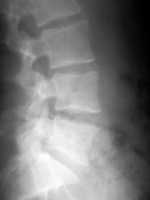MedicalResearch.com Interview with:
Juliana CN Chan MD
Chair Professor of Medicine and Therapeutics
Head, Division of Clinical Pharmacology, Department of Medicine and Therapeutics
Director, Hong Kong Institute of Diabetes and Obesity
Director, Clinical Research Management Office
Faculty of Medicine
The Chinese University of Hong Kong
MedicalResearch.com: What is the background for this study? What are the main findings?
Response: The prevalence of young onset diabetes (YOD) is increasing world-wide with doubling of its prevalence in the last 10 years in many developed nations. Using the Hong Kong Diabetes Register established since 1995, we first reported that 1 in 5 Chinese adults with diabetes were diagnosed before the age of 40 years. These young patients had poor control of multiple risk factors with 1.5 fold higher risk of premature death and cardiovascular-renal complications compared to patients with usual onset of diabetes after the age of 40 (Chan JC et al AJM 2014, Luk A et al Diabetes Care 2014). Due to the multisystem nature of diabetes, we asked the question whether these young patients might have recurrent hospitalizations during their 3-4 decades of complex clinical course.
Using a territory-wide diabetes database involving 0.42 million people followed up between 2002 and 2014, we compared the hospitalization rates accrued till the age of 75 years and found that patients with young onset diabetes had the highest hospitalization rates by attained age. Compared to patients with usual onset of diabetes, patients with YOD had 1.8- 6.7 higher risk of hospitalizations due to all-causes, notably renal disease compared to those with usual onset of disease.
Amongst patients with
young onset diabetes, over one-third of the bed-days were due to mental illness before the age of 40 years. We used mathematical modeling and estimated that intensified risk factor control in YOD can reduce the cumulative bed-days by 30% which can be further reduced by delaying the onset of diabetes. These original data is a wakening call to the community regarding the complex nature of YOD involving interactions amongst environment, lifestyles and personal factors (e.g. genetics, education and socioeconomic status) and the biomedical-psychological-behavioral needs of these high risk population, which if undiagnosed, untreated or suboptimally managed, can have huge economic impacts on health care system and loss of societal productivity, leaving personal suffering aside.
(more…)


























![MedicalResearch.com Interview with: David M. Aronoff, MD, FIDSA, FAAM Professor & Addison B. Scoville Jr. Chair in Medicine Director, Division of Infectious Diseases Department of Medicine Vanderbilt University Medical Center MedicalResearch.com: What is the background for this study? Response: Clostridium difficile infection (CDI) is a major cause of antibiotic-associated colitis and diarrhea and a leading cause of hospital-acquired infection. It is caused by the toxin-producing, anaerobic, spore-forming bacterium Clostridium difficile. Antibiotic use is a major risk factor for CDI but epidemiological studies suggest that other factors, some modifiable, some not, can also increase the risk for CDI. Older age is an example of a non-modifiable risk factor for CDI. Some epidemiological studies suggested that taking the prostaglandin synthesis inhibiting drugs called non-steroidal anti-inflammatory drugs (NSAIDs) might also increase the risk for CDI. NSAIDs include medications such as ibuprofen, naproxen, indomethacin, and others. Because NSAID use is so common, if it is a risk factor for the acquisition of, or severity of, CDI, that would be important because that would be a modifiable risk factor. We therefore sought to determine the impact of NSAID exposure on CDI severity in a mouse model of antibiotic-associated CDI. We also sought evidence for possible mechanisms whereby NSAIDs might increase the risk for CDI. MedicalResearch.com: What are the main findings? Response: Exposure of mice to indomethacin (an NSAID) for two days prior to infection with Clostridium difficile in antibiotic-exposed mice increased the severity of disease and this was associated with severe inflammation, changes to the bacterial populations in the colon and increased damage to the protective epithelial lining of the colon. MedicalResearch.com: What should readers take away from your report? Response: Our studies provide evidence in a mouse model of CDI that support human epidemiological studies linking NSAID use with CDI. MedicalResearch.com: What recommendations do you have for future research as a result of this work? Response: Studies in humans are needed to see if NSAID use is indeed a causal risk factor for CDI acquisition or severity. MedicalResearch.com: Is there anything else you would like to add? Response: This work was funded by the National Institutes of Health and the Crohn’s and Colitis Foundation of America. Dr. Aronoff has served as Consultant for Synthetic Biologics, Inc, Biocidium, NAEJA-RGM and BLC-USA on projects unrelated to this study. He also has research funding from Pfizer unrelated to this study. Citation: Damian Maseda, Joseph P. Zackular, Bruno Trindade, Leslie Kirk, Jennifer Lising Roxas, Lisa M. Rogers, Mary K. Washington, Liping Du, Tatsuki Koyama, V. K. Viswanathan, Gayatri Vedantam, Patrick D. Schloss, Leslie J. Crofford, Eric P. Skaar, David M. Aronoff. Nonsteroidal Anti-inflammatory Drugs Alter the Microbiota and Exacerbate Clostridium difficile Colitis while Dysregulating the Inflammatory Response. mBio, 2019; 10 (1) DOI: 10.1128/mBio.02282-18 [wysija_form id="3"] [last-modified] The information on MedicalResearch.com is provided for educational purposes only, and is in no way intended to diagnose, cure, or treat any medical or other condition. Always seek the advice of your physician or other qualified health and ask your doctor any questions you may have regarding a medical condition. In addition to all other limitations and disclaimers in this agreement, service provider and its third party providers disclaim any liability or loss in connection with the content provided on this website.](https://medicalresearch.com/wp-content/uploads/Dr-David-M.-Aronoff.jpg)



